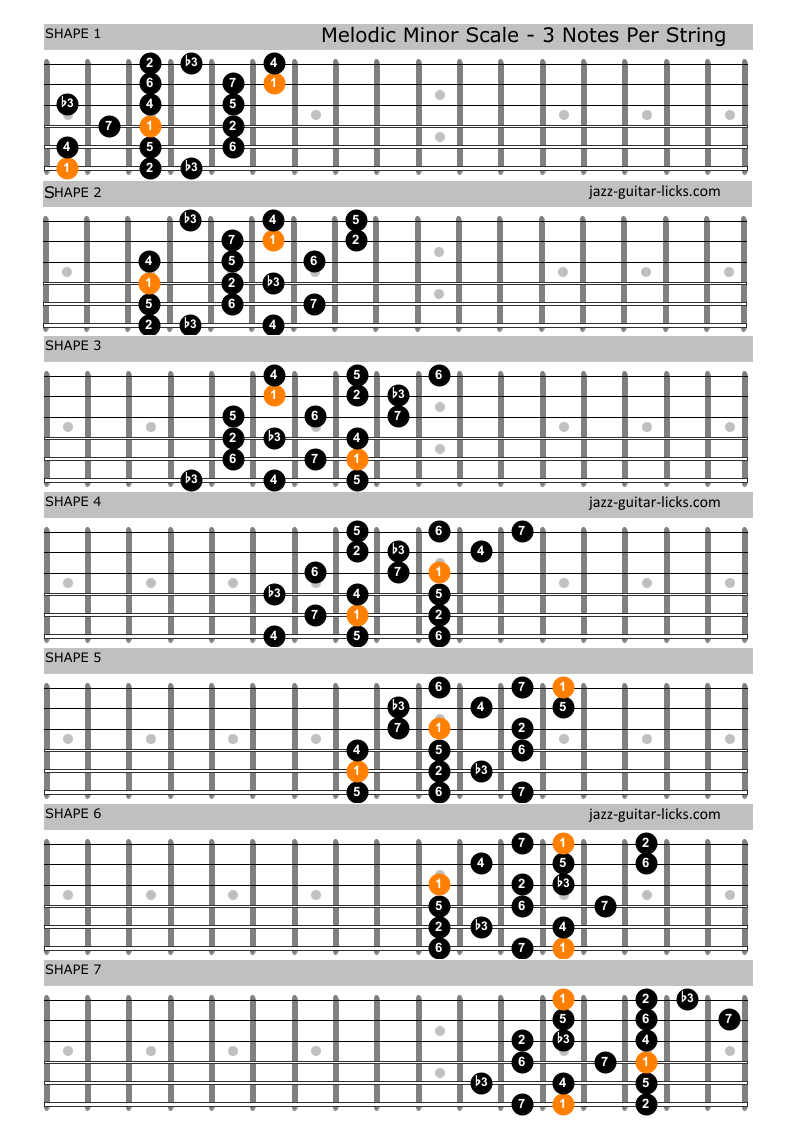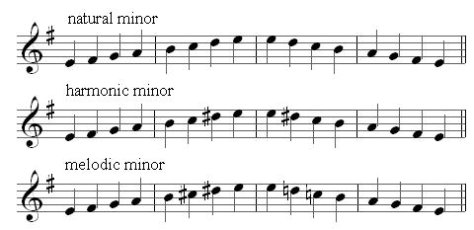
Let’s now take a look at the melodic minor scale. Here’s the G harmonic minor scale on the bass clef. Here’s the G harmonic minor scale on the treble clef.

Here’s a diagram of the G harmonic minor scale on piano.
Perfect 8th: The 8th note of the scale is G. Major 7th: The 7th note of the scale is F#. Minor 6th: The 6th note of the scale is Eb. Perfect 5th: The 5th note of the scale is D. Perfect 4th: The 4th note of the scale is C. Minor 3rd: The 3rd note of the scale is Bb. Major 2nd: The 2nd note of the scale is A. Tonic: The 1st note of the G harmonic minor scale is G. The formula for forming a harmonic minor scale is W-H-W-W-H-W 1/2-H. It’s now a half step (or semitone) higher. The seventh note of the scale has been changed from F to F#. For the G harmonic minor scale, the notes are G – A – B♭- C – D – E♭- F# – G. For example, the notes of the G natural minor scale are G – A – B♭- C – D – E♭- F – G. The harmonic minor scale raises the seventh note of the natural minor scale by a half-step, when ascending and descending the scale. Let’s now take a look at the G harmonic minor scale. Its notes are F – A – C.Ĭhords in the key of G minor. Let’s now take a look at the chords in the key of G minor. Thumb: 1, index finger: 2, middle finger: 3, ring finger: 4 and pinky finger: 5. What are the fingerings for the G minor scale? They are as follows: Finally, we move a whole step from F to G. Let’s start on G and move a whole step to A. (A whole step skips a key while a half step moves to the next key.) Let’s try this with the G minor scale. You can memorize this formula to form any natural minor scale: whole step – half step – whole step – whole step – half step – whole step – whole step or w – h – w – w – h – w – w. The sixth note of a major scale becomes the root note of its relative minor. The difference is the root note of the two scales. For the Bb major scale, it’s B♭, C, D, E♭, F, G and A. The notes of the G minor scale as we’ve seen are G, A, B♭, C, D, E♭, and F. Minor keys and their relative major make use of the same notes. The relative major of G minor is Bb major. Here’s the G minor scale on the bass clef. 
Here’s a diagram of the G natural minor scale on the treble clef. Perfect 8th: G (one octave higher) is the 8th note of the B natural minor scale.Minor 7th: F is the 7th note of the scale.Minor 6th: Eb is the 6th note of the scale.Perfect 5th: D is the 5th note of the scale.Perfect 4th: C is the 4th note of the scale.Minor 3rd: Bb is the 3rd note of the scale.Major 2nd: A is the 2nd note of the scale.

Tonic: G is the 1st note of the G natural minor scale.Highly Recommended: Click here for one of the BEST piano/keyboard courses I’ve seen online. This scale consists of the pitches, G, A, B♭, C, D, E♭, and F. Let’s start with the G natural minor scale. We will take a look at the three types of minor scale, the natural minor, melodic minor and harmonic minor scales. This lesson is all about the G minor scale.







 0 kommentar(er)
0 kommentar(er)
